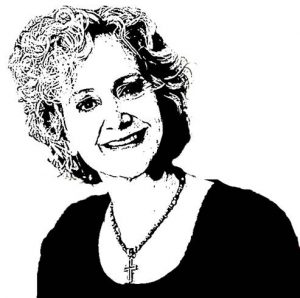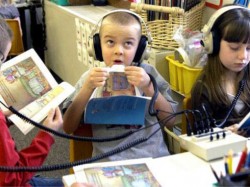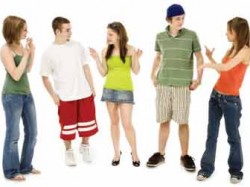
“Ask Cathy… An Open Dialogue with a Mother and Special Needs Architect”
Q: I’d like to repaint my daughter’s room. Can you explain how colors impact a child on the autism spectrum?
A: Science has shown that colors have an impact on mood, and color has a long history of therapeutic use (Withrow, 2004). Generally speaking, bright colors are exciting, and soft colors are calming. However, the effect of particular colors on ASD children can vary, and trial and error with multiple colors may be necessary to determine the color that is right for any individual child. In general: RED stimulates the mind, increases circulation and appetite, BLUE is calming, reduces blood pressure, BRIGHT YELLOW reflects light, can overstimulate, PALE YELLOW is calming, GREEN is soothing, associated with nature and creativity, LIGHT PINK or rose is soothing.
Research has shown that some ASD children see colors more intensely than others. However, this is not true for all. Intense colors, complex patterns, and bold contrast can create distraction for all children with sustained attention issues, but bright colors can also provide successful stimulation and help draw focus.
When changing the colors of any room, always try to change one color at a time so that the impact of any change can be understood and of course opt for toxin-free paints.
Q: My child hangs on to everything he picks up. The smallest objects seem to have significance for him. This results in his bedroom being filled with trash. What do I do?
A: My response for this question comes from personal experience. I found that with my son, the object had significance at the time that it was picked up. However, after it was tucked away in some hidden space in his room, it became significantly less important.
I initially attempted to engage him in throwing away this “trash.” However, it became apparent over time that this created a tremendous amount of stress for him. I could see the veins rise in his arms and his fists curl. Once I became aware of this, I implemented my “out of sight out of mind” strategy. I basically cleaned out all of these objects when he was not in the home, removing two trash bags of stuff without any repercussions. And I found it was a much healthier process for him and for me.
Q: I have three children, all under the age of 12. My oldest is on the autism spectrum. I find it very difficult to go out to a restaurant for dinner. Do you have any suggestions?
A: My first recommendation is that you choose a restaurant that characteristically has a lot of noise and commotion in it vs. one that traditionally has a reserved environment. This will allow your family dynamic to blend into the environment.
Next, request a table larger than your actual family count. You don’t need to explain why unless you are comfortable doing so. The larger table setting allows strategic placement of your children. This strategy will assist in limiting conflict.
I have a family of five and my oldest is also on the spectrum. If asked how large my party was, I said six because I found when I said five, we were seated at a four-top with a chair added to the end. This was the worst scenario we could have because the table top space was very limited and everyone was within arm’s reach. I would always request a rectangular table for six. This would allow my husband and I to sit in the middle and split our children to each side. This prevented invasions of personal space between our child on the spectrum and his siblings. If I was told there were no six- tops but rather only eight-tops, then I insisted on the eight top explaining the reason behind the request.
READ WEB VERSION Found in Autism File Magazine, Issue 69, Aug-Sept 2016


